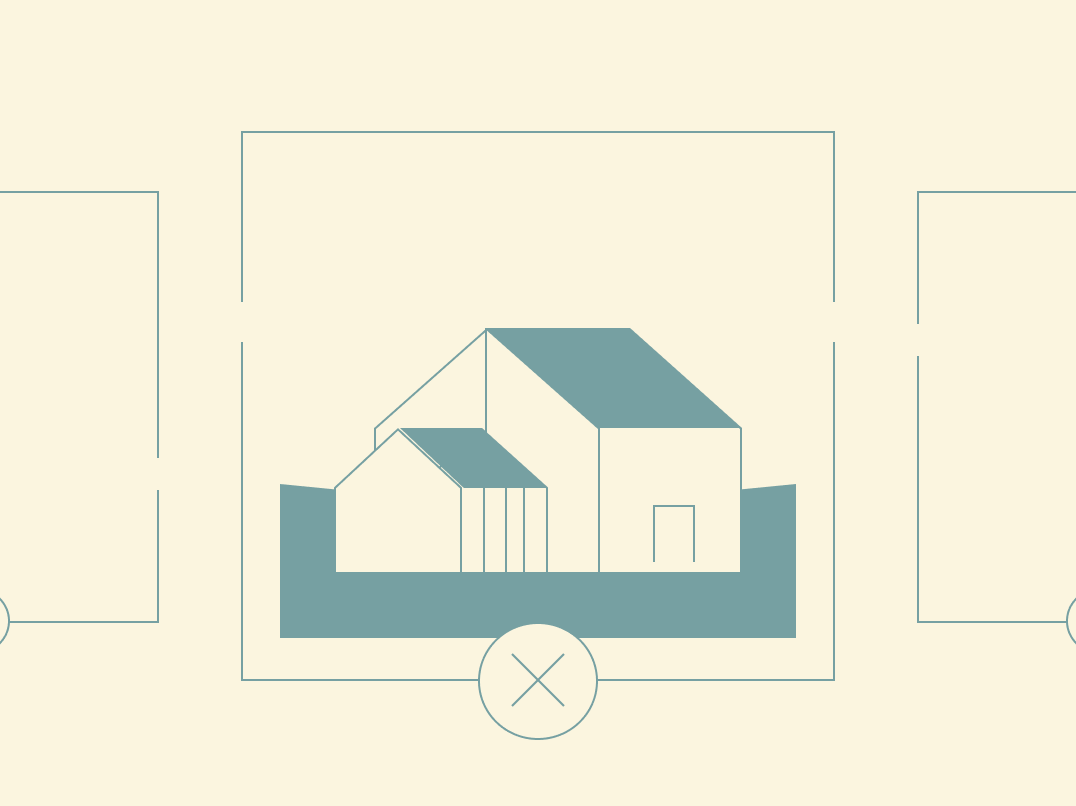Real estate photography mistakes made by beginner real estate agents and photographers are a book-size topic. It ranges from unwanted tripod reflections in the oven door in the kitchen to "closing off" spaces with improper framing. The list is not exhaustive. Other “sins” include an open toilet lid in the bathroom or cabinet doors, water droplets or stains on the sink, and all lights turned off. Windows should be closed, with all handles facing the same direction, and toilet paper rolled so it doesn't hang half a meter from the roll. Typically, bathroom rugs are also removed because while they are a useful element that undoubtedly adds comfort after a shower, they never look good in photos. It's crucial to separate the apartment from the owner.
20 common mistakes in real estate photography

These are just a few examples of the "sloppiness" in photos, as we can divide mistakes into technical mistakes (lack of knowledge or sufficient equipment), aesthetical (messy interior, poor framing), and preparational (no prior market research or property viewing).
- DIY real estate photoshoot
When you plan a property photoshoot, there are two options: take the photos yourself or hire a professional photographer (either directly or through an agency). Our advice is: unless you are knowledgeable about taking good interior photos, the first and fundamental mistake is attempting to do them yourself. Of course, you may not have a budget to contract such a job or wish to master it yourself. That’s all fine. The point is that interior photography is a steep learning curve, and it takes time, practice, and specialized equipment to get the right photos. We don’t discourage you from trying and learning; just bear in mind that real estate photography is harder than it looks.
- Lack of research and preparation
Try to visit the property in advance. Every home is different and has its quirks and attractive features. The more familiar you are with a property, the easier it will be to take amazing photos. Even a brief visit ahead of the shoot will prompt your creative imagination, and you can ensure that the property is ready for shooting. If not, you will get an idea of what kind of home staging is necessary and can delegate that job to your team. You can also give better instructions to cleaners, maintenance, or a photo/video team if you decide to contract the photoshoot to professionals.
- No clear objectives
Having a clear objective can guide decisions about the angles, lighting, and composition. That's why it is essential to consider the target audience if the property is for commercial purposes, for sale, for rent, etc. Typically, sellers know better than anyone the home’s strong features and selling points and might guide you. For instance, if the goal is to emphasize the property's natural lighting, you might schedule the photo shoot during the day and prioritize shots that showcase the abundant sunlight streaming through the windows. Tailoring your approach to suit the preferences and needs of the intended viewers can significantly impact the success of the photography.
- Focusing on flaws rather than strengths
Avoid highlighting the property's flaws in the visual presentation. Focus on its strengths and refrain from emphasizing small defects or imperfections that may be inevitable if it’s not a new house or flat. As they say, there is no one size fits all solution (surely not everyone is looking for a brand-new luxury penthouse), so your portfolio has properties of different standards. Still, you should present their benefits and positive sides.
- Too many/ too few photos and videos
An excessive number of photographs or lengthy videos can overwhelm the viewer. Carefully select the best shots and present the property concisely yet attractively.Too few images can make a negative impression, either. You don't want your clients blind guessing if there is something wrong with the property, because of insufficient number of photos added tot he listing. The visual presentation should be enticing yet leave the customers wanting even more, so the final property viewing will be the cherry on top of the proverbial real estate cake.
- Lack of diversity in shots
Limiting yourself to only exterior or interior shots of the property may be insufficient. Vary the photos: Start from the general view plan, which will give the viewer an idea of the property, its layout, and separate rooms, to a few pleasing details (intricate cupboard design, great woodwork, design fixtures). Try to showcase a variety of perspectives and shots to help the viewer better understand the layout and space of the property. Using a drone, for example, can be a good solution.
- Improper lighting
Lighting is crucial in real estate photography and videography. Avoid taking photos during overly bright times of the day when the sun casts harsh shadows. On the other hand, excessively dark rooms can make the property look unappealing. Choose the right times when natural light is softer and when there is plenty of it. If possible, schedule the photoshoot in the daytime. Natural light leads to vibrant colors in your pictures.
You can experiment with turning all lights on and off to achieve different image effects, but if you are a beginner this might lead to another problem, because of different color temperatures.
- Forgotten white balance
When you decide to mix different sources of light you probably will have to tackle the white balance issue, usually in post-production. Artificial light generally adds warmth to your pictures, so working with the lights off will bring you a cooler temperature (unless you use a warmer filter). Light temperatures can be balanced and adjusted during photo editing, but if you are a beginner focus on daylight to achieve better results.
- Poor quality photos
A blurry picture with highly visible grain and noise isn’t going to work for your listing. Higher shutter speeds require increasing the ISO value, but too high ISO can add digital noise to your photos. It can be an impossible dilemma if you don’t have quality equipment or use digital post-processing. That’s why full-frame cameras have an advantage in real estate photography because they can get a lot more light, and secondly, they can handle the noise problem better.

- Leaning walls
Things that lean can be good, just look at that tower in Pisa, people love it! On the other hand leaning walls in property photos, however, not so good. The unwanted visual trickery that causes leaning walls, where the confines of the room appear to splay outwards or tower inwards, is caused by a combination of two things: The perspective from the height at which the shot is taken. That’s the way the lens works, but the effect is amplified if using a wide-angle lens. Ensure that the walls in the photos are straight; it will look much better.
- Shots taken from head height or crouching
In other words, when taking photos, the camera is often pointed toward the ceiling or, more commonly, toward the floor. It's best to place the camera at around 120cm in height (waist height). You may also try photographing above the lines defined by countertops. This advice may initially seem somewhat unclear, but it carries some interesting insights. When photographing rooms, you should follow the level created by the countertops, as it has aesthetical and practical significance for the composition. If you shoot from a much higher or lower perspective, the interior will look unnatural.
- No stabilization on a tripod
Blurry images, reduced sharpness, and lack of clarity - not using a tripod in real estate photography can lead to disastrous consequences. On top of that you will be challenged by the limited low-light performance, inconsistent composition, inability of using small apertures (f5.6-f11). A dark room in every photo will not look good, and could put off potential clients. It should be filled with spotlights that create an atmosphere and improve the photo's quality. These photos should be taken with a tripod and longer exposure times to achieve soft and cozy interiors. You can achieve a satisfactory result by considering various parameters, lighting, and compositions.
- Lack of composition
Proper framing is the most important factor. Each room has its strengths – large windows, a beautiful wall, or impressive bespoke furniture. It's essential to focus on the attractive element that will catch the viewer's attention. Avoid photographing mirrors, closets, or damaged walls. Minor photo flaws can escalate into significant issues and effectively deter potential clients. Furthermore, during framing, remember that all vertical and horizontal lines in the apartment, such as door frames or kitchen countertops, must be the same in the photos of the apartment. In most real estate listing websites, horizontal photos are recommended, that’s why you should focus on them. Vertical photos may be cropped in the listing, and potential viewers will only see a portion of the image. You want to avoid this.
- Fisheye lens
Fortunately, this is becoming less common, but still, you can see such photos sometimes. Shooting an interior with a fisheye lens makes it look unnatural and unflattering. Fisheye or ultra-wide lenses should not be used for real estate photography; a distorted perspective guarantees an unattractive photo. On the other hand, you should have at least one proper wide-angle lens to take in the whole interior or photograph, particularly narrow bathroom or study.
- Using too narrow lens
Until recently, most cameras and phones did not have a wide-angle lens. Therefore, it was challenging to show the entire layout of a room in a photo. If the photo shows only a fragment, a cut of the property, you don’t provide a comprehensive picture of the interior.
- The property isn’t spotless clean
Before starting a photo session, ensure the property is neat and clean. The visual presentation of a property in its best possible condition is essential to create a positive impression on potential buyers or renters. Take the time to tidy each room, dust surfaces, vacuum carpets, and mop floors to ensure cleanliness throughout the space. Check for any signs of water stains or soap scum in the bathroom and kitchen, and clean mirrors and fixtures for a sparkling appearance.
- Carelessness in furniture arrangements
Pay attention to small details like making beds, arranging furniture, and straightening curtains or blinds. A sloppily hung towel, a scrubber on the sink, and cosmetics in the corner of the shower won’t do any justice, even if the space itself is amazing, and can distract clients from the property's advantages. The goal is to create a neutral, uncluttered environment that appeals to a broader audience, so you should focus on creating a clean and minimalist look. This involves decluttering countertops, removing excessive furniture, and organizing storage spaces. The aim is to showcase the home's architectural features, space, and potential rather than the belongings of the current occupants.
- Lack of depersonalization
Remove clutter, personal items, or unsightly objects from your frame. This step is essential as it allows potential buyers or renters to envision living in the space. Start by taking down family photos, children's artwork, and any personalized decorations that reflect the current residents' tastes and lifestyles. Clearing these items creates a blank canvas for visitors to project their preferences onto the space once they see it in the photos.
In addition to personal photographs and memorabilia, consider packing away any collections, religious or political items, and excessive knick-knacks that may clutter the rooms. Depersonalization also extends to color choices. If the walls are painted in bold or unique colors that may not appeal to everyone, consider repainting them in neutral tones. Neutral colors provide a fresh and clean backdrop that allows prospective buyers or renters to envision their furnishings and decor fitting seamlessly into the space. The space will seem brighter, which will look better in the photo.
- Neglected greens
Well-kept gardens and outdoor spaces are also crucial, so trim any overgrown plants, mow the lawn, water plants, and remove any debris. A well-maintained and clean property enhances its visual appeal and reflects the care and effort put into presenting it to potential buyers or renters.
- Excessive retouching
While editing photos and videos can help improve their quality, excessive retouching can mislead potential clients. Today, it is recommended to showcase properties as they are. If you are dealing with an old-style apartment, show it as it is. Why? It will save time for clients by eliminating those who won't like such a style right from the start. Try to maintain a realistic appearance of the property and avoid excessive color corrections or the removal of significant details, no matter how tempted you may be by photo processing software or AI. Even NAR commented on not using AI to enhance your listings.
Avoiding common mistakes in real estate photography can make a world of difference in showcasing properties effectively. By dealing with issues such as improper lighting, cluttered spaces, and lack of attention to detail, photographers and real estate agents can create compelling visuals that captivate potential buyers and renters. Remember, the goal is to present listings accurately, beautifully, and in a way that invites viewers to envision their future in the space. With careful attention to these pitfalls, the path to successful real estate photography becomes clearer, leading to more successful transactions and satisfied clients.



.png)



